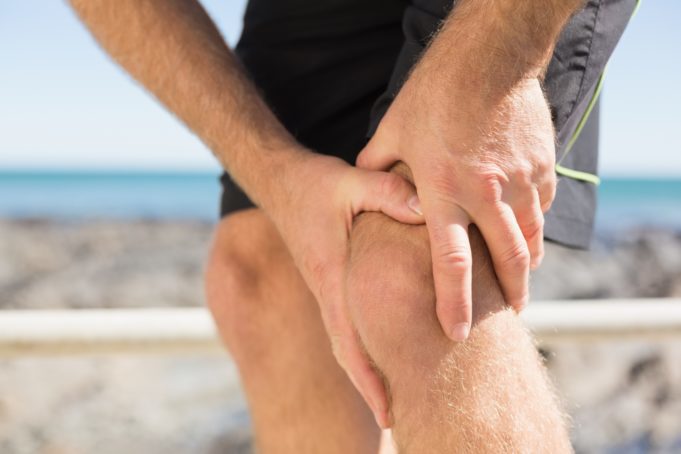Preventing Injuries
I enjoyed hosting the #fastesthouroftheweek recently and one of the topics that came up was how to prevent injuries. It’s so frustrating when psychologically you’re on top form, feeling motivated and inspired but you can’t run because you’re injured. Worse still, you’ve put in the hours training for an event and then, right at the last minute, your journey to the start line is halted by an unexpected pull, tear or break. Forget the ‘bear with a sore head’ there’s nothing worse than an injured runner!
Some people never seem to be affected whilst others are constantly plagued with injury. Why is that? Are some people just tougher than others? What can you do to reduce your risk of injury?
Injuries can involve so many different parts of your anatomy: muscles, tendons, ligaments and bones to name a few. They don’t have to affect your feet or legs to stop you running; back and upper body injuries can put you out of action too. Regardless of what and where you’re injured, there are some common mistakes that you can avoid to help keep you running injury-free.
• Lack of warm-up.
Let’s start with an obvious one. It makes sense that if you go from sitting around doing nothing and suddenly launch straight into a fast run, you’re more likely to get injured. Warming up gradually for around ten minutes will allow your circulation to increase which raises body temperature and specifically the temperature of your muscles. Muscle fibres are a little like elastic bands and warming them up gradually will mean they’re more pliable. This is particularly important on chilly winter days. Joints appreciate a slow beginning too. The joint space between bones contains synovial fluid which acts as a grease to lubricate the joint. Synovial fluid is produced in response to exercise. Starting off rapidly doesn’t allow enough time for the joints to be ‘oiled’. A warm up also allows your neural pathways from your brain to your muscles and joints to get into gear too. This helps with your reaction time and co-ordination which may reduce injury. A warm up can simply be a brisk walk building to a slow jog followed by some dynamic stretches like squats and lunges. Don’t stretch a cold muscle.
• Poor training plan.
A realistic and flexible training plan will help you avoid injury. It’s important to gradually increase distances. 10% weekly increase is the guide but it is just that – a guide and this may be too much or too little for some. You’re just asking for trouble if your plan is too intense and your body is overloaded. Scheduling rest days is important and it’s also sensible to give yourself an ‘easier week’ every four to five weeks to allow your body to adapt to the training load. Your plan has to fit with your life. If you’re missing sessions and constantly playing catch-up then it’s easy for your training steps to get too big which often results in injury. When you build a plan, add in a couple of extra weeks as a buffer for illness or life events.
• Too much running.
We all love to run but it’s wise to invest some time in cross training too. Swimming, cycling, whatever you fancy; just something that isn’t running. You’ll maintain your aerobic fitness at the same time as working muscles other than your usual running ones. Allocating time for core strengthening work is essential too. Having a strong core that helps you maintain good running form and posture throughout your chosen distance will make you efficient, keep joints in good alignment and reduce injury. Runners are well known for skimping on strength and conditioning work but there are so many benefits and it’s well worth the effort.
• Not considering the cause.
Injuries may be due to a simple trip or fall but more often than not they’re something more complicated, build up over time and are potentially avoidable. Muscular imbalances, poor biomechanics and persistent niggles are examples where taking action can be beneficial. Getting proper advice from a sports physiotherapist who can give you rehabilitation exercises and advice for any injury but also spot underlying problems, can mean you run injury-free in the future. Whilst it’s awful being injured, going back too soon can make things worse and it’s worth taking the time to rehab properly and consider why you got injured in the first place.
• Ignoring medical factors.
Why some people get injured more often than others is complex and not fully understood. It may be partly due to our genetics, for example our genes may determine how fast our cartilage is broken down or the exact way we move and hold our body. Clearly we can’t change our DNA but we can make sure that we have good running form and strong, well-conditioned muscles. Interestingly there appear to be hormonal influences for women who may find that injuries are more common around the middle of their menstrual cycle, close to ovulation. It’s often a case of learning about yourself and also learning from your injuries too.
• Forgetting the bigger picture.
It’s not just the running itself that makes you prone to injury. If you’re stressed, over-worked and sleep deprived your reaction times and co-ordination aren’t going to be tip-top. Falling, tripping and simply going over on your ankle might be the result. If you aren’t eating well then how can your body repair itself and cope with the repeated challenges you set it? You’ve got to give if you want to take. Sometimes it isn’t as simple as getting yourself a new pair of shoes. Look at the bigger picture to give your body a chance to keep up with the demands you place on it, be kind to yourself and cut back when your body tells you to.
It would be great to hear from those of you who’ve come back from injury. Did you identify an underlying problem? What changes have you made and have they worked? Leave a comment below or tweet me @JulietMcGrattan with #ukrunchat.






